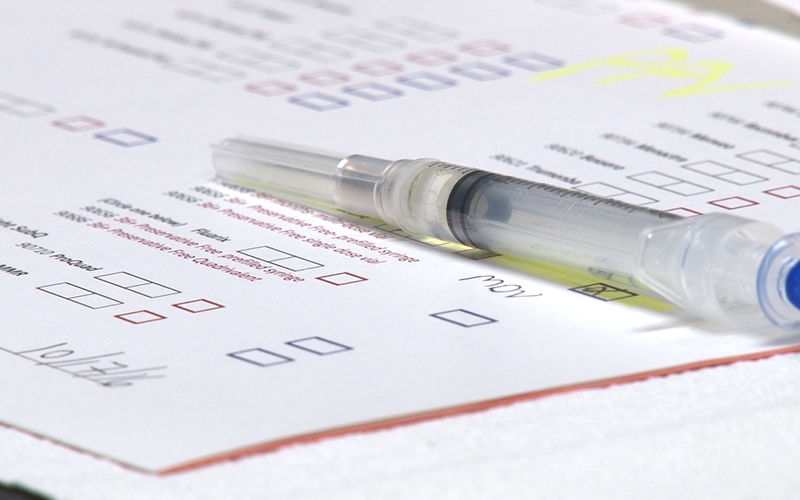PHOENIX – Better get the Band-Aids out. This year, the Centers for Disease Control and Prevention recommends against nasal spray flu vaccinations, saying it’s less effective than the shot.
That means Arizona nurses and doctors will inject thousands of people the old-fashioned way, resulting in sore arms and lots of tears.
It may make a difference for some whether to get the vaccine. The nasal spray method represents about one third of all the vaccinations that have been given to children in recent years, according to the CDC.
“That has a huge impact on whether or not we even go back to get the flu shot because I don’t want to have her (her middle child) have another giant meltdown and be afraid,” said Jackie Zolnowski, a mother of three daughters from Gilbert.
However, Phoenix resident Zulema Viera said she doesn’t have a problem with the shot. She recently brought her children into the Maricopa County Public Health Clinic, and each of her children received the injection.

This year, the Centers for Disease Control and Prevention recommends against nasal spray flu vaccinations. (Photo by Dana Lewandowski/Cronkite News)
“Well, I would go with the actual shot,” she said. “I just think it’s more effective on them. With the nasal spray, I believe that most of the medication won’t go through.”
The Food and Drug Administration approved the nasal spray FluMist in 2003. FluMist contains a live, weakened version of the virus so that the body becomes more immune when exposed.
But the influenza virus changes every year, so experts must constantly evaluate the effectiveness of vaccines.
Dr. Amy Shoptaugh, who works at All About Kids Pediatrics in Tempe, said experts look at cases of influenza year round and compare them to the vaccine.
“(They) try to predict what the main influenza strains are going to be for the next year,” she said. “They make their vaccine based on the data from the past season as well as what’s going on in other countries with the influenza.”
Shoptaugh said the problem is that by the time the influenza spreads in the U.S., the virus could have morphed again, making the vaccine less effective.
Last year, the Arizona Department of Health Services recorded nearly 24,000 cases of the flu. So far this season, the department has had seven confirmed cases. However, flu activity generally has peaked after January.